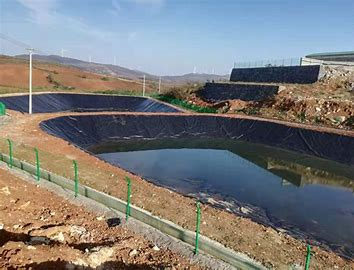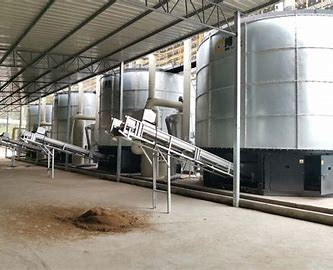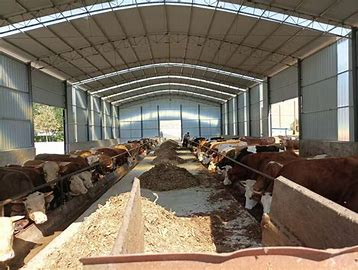
Release Date:2024.09.04
At present, the production technology and management level of pig breeding in China have been greatly improved, and the breeding scale has gradually expanded, but it also leads to a large amount of manure production and discharge. Therefore, it is necessary to do a good job in the harmless treatment of pig manure. At the International Pig Congress, authoritative experts shared the harmless treatment of manure and the method of resource utilization.
1. The significance of harmless treatment and resource utilization of manure pollution
The amount of manure generated in the process of pig breeding is huge, which will pollute the surrounding water sources if not treated in time and effectively. Nutrients contained in faecal sludge can lead to eutrophication of water bodies when they enter rivers. Manure pollution can also lead to excessive heavy metals in soil, and harmless treatment of raw pig manure can greatly reduce its pollution to water resources, air, soil and so on.
2.Harmless treatment technology of manure pollution
2.1 Harmless sewage treatment technology
2.1.1 Anaerobic digestion treatment
Firstly, the separated sewage enters the acidifying slag removal tank for slag removal treatment, and the sewage enters the homogenization tank after slag removal to adjust the water quantity and water quality. Then enter the first stage anaerobic tank. Most of the biological oxygen demand and biochemical oxygen demand in sewage are removed by anaerobic tank treatment. The wastewater treated by the primary anaerobic tank is treated in the secondary anaerobic tank, which can remove more than 50% of biological oxygen demand, biochemical oxygen demand and ammonia nitrogen in the wastewater. At this time, the wastewater reaches the standard of medium concentration wastewater and needs further harmless treatment.
2.1.2 Biochemical treatment of biogas slurry
The wastewater treated by the above secondary anaerobic tank will flow into the aerobic system, and more than 80% of the biological oxygen demand, biochemical oxygen demand and ammonia nitrogen in the wastewater can be removed by biochemical treatment under the action of active microorganisms. The treated wastewater is further treated by artificial precipitation and oxidation pond. The sediment generated by precipitation treatment is discharged into the concentration tank to reduce the moisture content and then composted.

2.2 Harmless treatment technology of manure residue
2.2.1 Production technology of biological organic fertilizer
The production of bio-organic fertilizer is to add an appropriate amount of microbial compound agent in the manure residue, and use the rapid proliferation of microorganisms to realize the rapid decomposition and treatment of organic matter.
2.2.2 Biogas treatment technology
Biogas treatment technology is a comprehensive process treatment technology. The technology is based on anaerobic fermentative bacterial decomposition, on which faecal residue is converted into biogas, bog mud and carbon dioxide through anaerobic digestion. Biogas treatment technology has many advantages, which can not only protect the ecological environment well, but also convert manure into organic fertilizer, reduce feeding costs and improve breeding benefits.
2.2.3 Biological treatment
By using the digestive system of earthworm, under the action of body protease, lipase, amylase and other digestive enzymes, the fermented manure can be quickly decomposed into nutrients that can be easily used by itself or other organisms.

3. Resource utilization of manure
3.1 Biogas project
The construction of biogas digester, under the decomposition of anaerobic bacteria, the organic matter and protein in feces can be decomposed and converted into usable biogas slurry. Then, the automatic separation technology of manure and slag is used to collect the separated sewage into the biogas tank for power generation for pig breeding.
3.2 Earthworms farming
The treated manure can be used as one of the food sources for earthworms. The collected manure is sprinkled with water, pounded, and then poured into utensils for fermentation. The heat energy produced by fermentation can effectively kill harmful pathogens in feces and retain organic material. After treatment, it is used as concentrated feed for earthworm cultivation.
3.3 Pig-marsh fruit and vegetable ecological breeding
The feces collected in the process of pig breeding enter the biogas tank for anaerobic fermentation treatment, and the residue after fermentation can be used as fertilizer for fruit and vegetable planting, so as to improve the yield and quality of fruit and vegetable, and achieve the goal of pollution-free fruit and vegetable planting.

4. Conclusion
With the improvement of pig breeding technology, it has become an important way to solve the problem of manure pollution to build a planting and breeding cycle system and rationally treat and utilize manure pollution. In the process of harmless treatment and resource utilization of manure, breeding personnel should choose the best treatment and utilization mode based on their own actual situation. In strict accordance with the national requirements, do a good job in source reduction, process control and end utilization, constantly improve the resource utilization rate of manure, reduce the harm to the environment, and then realize the green and efficient development of pig breeding industry.
If you would like to learn more about the pig industry, please visit the International Pig Congress website for more information.
Source: SWINE INDUSTRY SCIENCE
If there is infringement, please contact to delete.